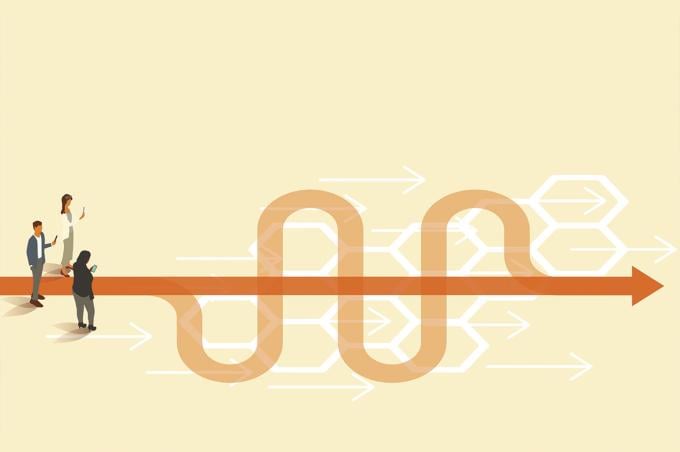Coding and documentation reforms implemented in 2021 for office and outpatient evaluation-and-management (E/M) services—and then rolled out across all settings in 2023—were intended to help relieve physicians’ administrative burdens.
Primary care physicians are reporting that they perceive that the time they spend on E/M documentation tasks is more “clinically meaningful,” according to an AMA-funded study published in the Journal of General Internal Medicine.
The researchers, led by a team at the University of California San Francisco, found that primary care physicians perceived spending less time and effort in documenting review of systems and history of present illness/physical exam after the E/M coding change.
They compared survey answers from 87 primary care physicians from before the E/M changes were implemented (February 2020) and after (March 2022). Survey respondents included internists, family physicians, pediatricians and geriatricians.
Survey responses were also compared to objective audit-log measures of documentation time per E/M encounter.
As the leader in physician well-being, the AMA is reducing physician burnout by removing administrative burdens and providing real-world solutions to help doctors rediscover the Joy in Medicine™.
Changes were collaborative effort
The AMA worked with the Centers for Medicare & Medicaid Services (CMS) and convened a coalition of 170 state and specialty medical societies to simplify E/M documentation requirements and make them clinically relevant.
The effort began in 2018, with the AMA assembling a joint work group representing its Current Procedural Terminology (CPT®) Editorial Panel and the AMA/Specialty Society RVS Update Committee (RUC). The work group was led by Barbara Levy, MD, a former RUC chair, and Peter Hollmann, MD, former chair of the CPT Editorial Panel.
CMS implemented substantial changes to E/M documentation requirements to reduce the physician administrative burden. Major changes included eliminating history of present illness, physical exam and review of systems as required elements in CPT code-level selection.
Making documentation meaningful
“The total time spent—the objective measure from the data—is important,” said Lindsey E. Carlasare, a senior manager for research and policy at the AMA, and co-author of the study, which says that the “median objective time spent on documentation did not significantly decrease.”
But Carlasare emphasized that physicians can also experience administrative burdens in terms of “cognitive effort.”
For the study’s authors, “this meant that the perceived reduction in the time spent on clinically irrelevant documentation might also be a meaningful indication that the change in the regulations actually achieved its intent,” she said. “If people were feeling that their cognitive load was lessened—even though it may not have been on paper by the data—it's still an important indicator.”
Other AMA researchers who co-authored the study were Christine Sinsky, MD, vice president for professional satisfaction, and Kathleen Blake, MD, MPH, who has since retired from her role as the AMA’s vice president of healthcare quality.
Regulatory burdens matter
“Using physician perception as a key indicator can be an effective evaluation method for federal policies targeting documentation burden reduction,” the study says.
“If you think about what the regulatory change set out to do—which was to reduce the burden—that's actually happening,” Carlasare said. “It’s giving physicians back the time to spend documenting things that actually help patient care—instead of those that are just intended for coding or billing.”
In this regard, the study also provides validation for the AMA’s efforts to reduce administrative burdens, and it provides evidence that it is a worthwhile cause, she said.
“This type of study is particularly encouraging for policymakers since it shows that their efforts—like the changes to the coding requirements—can actually catalyze meaningful improvements and achieve the aims that they set forth,” Carlasare said.
Other takeaways of the study include the importance of consulting with, and getting feedback from, physicians before making sweeping changes and the importance of providing education and training to prepare for those changes.
“Education matters and informing physicians about changes—and helping them understand how those changes will help them reduce their administrative burden—can go a long way in facilitating those improvements,” Carlasare said.
The findings should encourage health care organizations to invest in educating physicians on changes intended to reduce documentation burdens, the study says, noting that the academic institution where the surveys were taken “did incur nontrivial, one-time costs associated with the education efforts.”
Learn with the AMA about implementing CPT E/M revisions and explore this free AMA STEPS Forward® toolkit on simplified outpatient documentation and coding.




